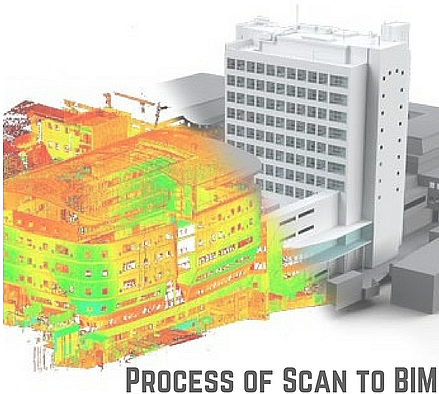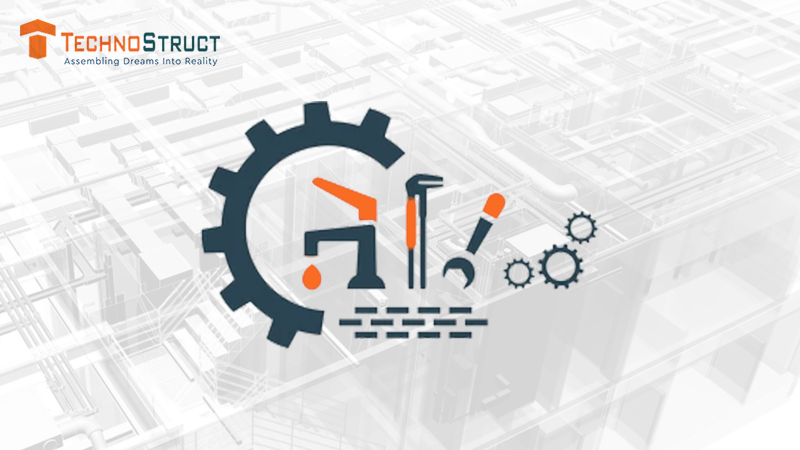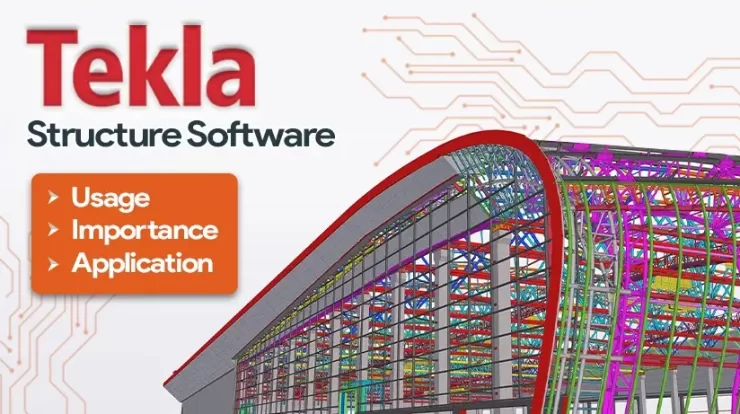
In the dynamic realm of construction engineering and design, precision, efficiency, and innovation reign supreme. In this digital age, where every facet of our lives is intertwined with technology, the construction industry stands at the forefront of transformation, propelled by sophisticated solutions like Tekla software.
Tekla software isn’t merely a software program; it’s a cornerstone of modern structural engineering and architectural design. With its powerful tools and intuitive interface, Tekla software uses has revolutionized the way professionals conceptualize, plan, and execute construction projects.
In this blog, we delve into the multifaceted world of Tekla Software, exploring the Tekla Software uses, importance, and wide-ranging applications in the construction industry. Join us as we embark on a journey through the intricacies of Tekla Structures, unlocking its potential to shape the future of construction.
Tekla Software: An Introduction
Tekla Structures is a powerful BIM software designed specifically for structural engineering, detailing, and construction management. Developed by Trimble, Tekla software offers a comprehensive suite of tools and features that enable users to create, analyze, and manage 3D models of structures with unparalleled precision and efficiency.
Tekla software uses has become an indispensable tool for architects, engineers, and construction professionals worldwide. From initial conceptualization to fabrication and construction, Tekla Structures streamlines the entire workflow, facilitating collaboration, minimizing errors, and optimizing project delivery.
Whether working on small-scale residential projects or large-scale commercial developments, Tekla Structures empowers users to visualize, simulate, and optimize every aspect of their designs, ensuring the highest levels of quality and accuracy throughout the construction process.
Understanding the Interface and Features
Tekla Structures software boasts a robust interface designed to cater to the intricate needs of structural engineers, architects, and construction professionals. Mastering this interface is essential for leveraging the full potential of the software. Let’s delve into the key components and features:
Navigation Panel
The navigation panel provides access to various functionalities and tools within the software.
It serves as a central hub for creating and managing structural models.
Modeling Tools
Tekla software offers a comprehensive suite of modeling tools for creating accurate 3D models of structures.
From basic shapes to complex geometries, users can easily generate detailed models using intuitive tools.
Drawing Editor
The drawing editor enables users to create detailed drawings and documentation directly within the software.
It facilitates the generation of construction drawings, fabrication drawings, and reports, streamlining the documentation process.
Model Views
Users can visualize their models from different perspectives using the model views feature.
Tekla software allows for a better understanding of the structure’s spatial layout and enables effective communication among project stakeholders.
Clash Detection
Tekla software incorporates advanced clash detection capabilities, allowing users to identify and resolve clashes between structural elements.
This helps prevent costly errors during the design and construction phases.
Customization Options
The software offers extensive customization options, allowing users to tailor the interface and workflows to their specific needs.
Custom templates, settings, and macros can be created to enhance productivity and efficiency.
Integration with Other Software
Tekla Structures seamlessly integrates with various software platforms, including analysis and design tools, as well as Building Information Modeling (BIM) software.
This interoperability enhances collaboration and facilitates data exchange across different disciplines.
Modeling Automation
Tekla Structures incorporates powerful automation features, such as parametric modeling and scripting capabilities.
It helps to streamline repetitive tasks and accelerate the modeling process.
Visualization and Rendering
The software includes visualization and rendering tools for creating realistic renderings and visualizations of structural models.
This allows stakeholders to visualize the outcome of the project with high fidelity.
Collaboration Tools
Tekla Structures provides collaboration tools for sharing models, collaborating with team members, and managing project data.
This fosters collaboration and ensures smooth communication throughout the project lifecycle.
Importance of Tekla Software in the Construction Industry
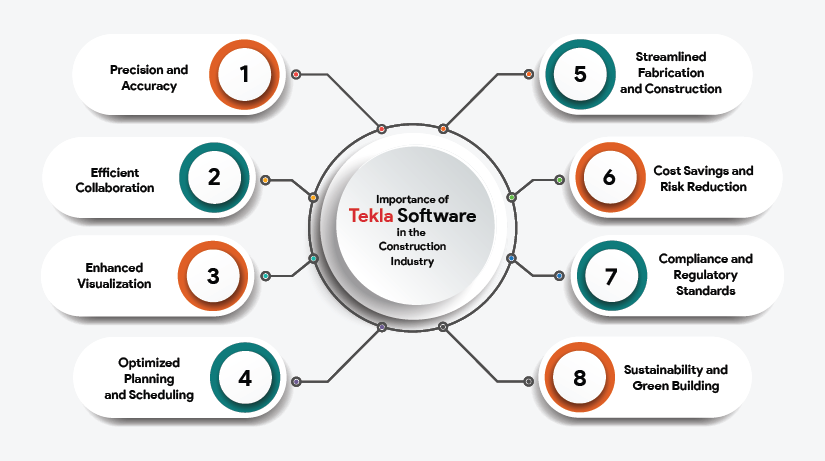
In the dynamic realm of construction, Tekla software uses stands out as pivotal, revolutionizing the way structural engineering projects are planned, designed, and executed. Here, we delve into the profound significance of Tekla Structures within the construction industry:
Precision and Accuracy
Tekla Structures empowers engineers to create highly detailed, accurate 3D models of structures, ensuring precision in design and construction.
This precision minimizes errors and rework, ultimately saving time and resources.
Efficient Collaboration
Tekla Structures facilitates seamless collaboration among architects, engineers, contractors, and other stakeholders involved in a project.
Through its BIM capabilities, it enables real-time sharing of information, fostering better communication and coordination across teams.
Enhanced Visualization
With its advanced visualization features, Tekla Structures provides stakeholders with immersive, realistic views of proposed structures.
This enables a better understanding of design intent and allows for early detection of potential issues, leading to informed decision-making.
Optimized Planning and Scheduling
By integrating scheduling and planning tools, Tekla Structures helps optimize project timelines and resource allocation.
Its ability to generate accurate quantities and schedules streamlines the planning process, enabling efficient project management.
Streamlined Fabrication and Construction
Tekla Structures is renowned for its seamless integration with fabrication machinery and construction processes.
It generates precise fabrication and erection drawings and CNC data, facilitating smooth manufacturing and construction workflows.
Cost Savings and Risk Reduction
Through improved efficiency, reduced errors, and optimized workflows, Tekla Structures contributes to significant cost savings over a project.
Moreover, its ability to identify clashes and conflicts early on helps mitigate risks associated with construction delays and rework.
Compliance and Regulatory Standards
Tekla Structures ensures compliance with industry standards and regulatory requirements. Its comprehensive modeling capabilities enable engineers to accurately model complex geometries.
It helps in incorporating structural elements following relevant codes and standards.
Sustainability and Green Building
As sustainability becomes increasingly important in the construction industry, Tekla Structures supports designing and constructing environmentally friendly structures.
Its integrated analysis tools enable engineers to optimize designs for energy efficiency and sustainability.
Application of Tekla Structures in Structural Engineering
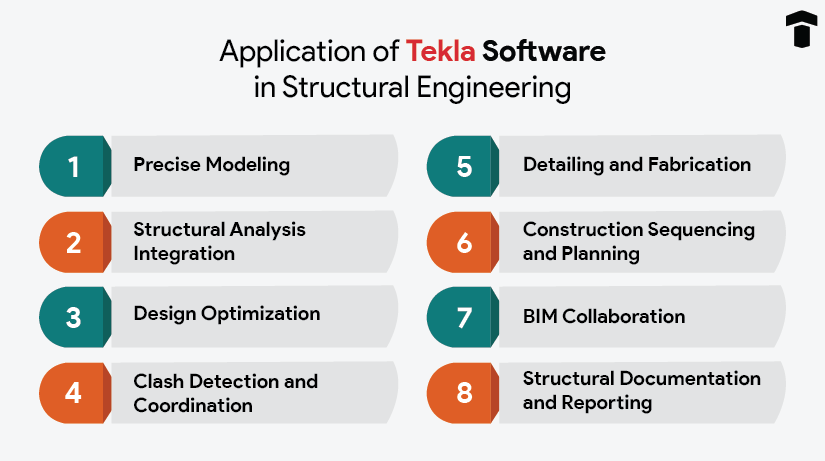
Tekla Structures, a powerful structural engineering software, revolutionizes the way structural engineers design, analyze, and manage their projects. Here, we delve into the diverse applications of Tekla Structures in structural engineering:
Precise Modeling
Tekla Software allows engineers to create accurate 3D models of structures, including buildings, bridges, and industrial plants.
Its intuitive interface and advanced modeling tools accurately represent complex geometries and structural components.
Structural Analysis Integration
Tekla Structures seamlessly integrates with various structural analysis software, facilitating the efficient transfer of model data for analysis and design validation.
This integration ensures that structural engineers can assess the performance and behavior of their designs accurately.
Design Optimization
By utilizing Tekla Structures, engineers can explore different design alternatives and optimize structural performance.
The Tekla software uses enables parametric modeling, allowing for rapid iteration and evaluation of design options to achieve the desired structural efficiency and economy.
Clash Detection and Coordination
Tekla software offers powerful clash detection capabilities, enabling engineers to identify and resolve conflicts between structural elements, architectural components, and MEP systems.
This functionality enhances coordination among project stakeholders and helps prevent costly rework during construction.
Detailing and Fabrication
One of the key strengths of Tekla software lies in its ability to generate detailed fabrication drawings and shop drawings automatically.
Engineers can produce precise drawings, including plans, sections, and schedules, to communicate design intent effectively to contractors and fabricators.
Construction Sequencing and Planning
Tekla Structures supports the creation of 4D construction sequencing models, which integrate the structural model with project schedules.
This enables stakeholders to visualize construction phasing, identify potential conflicts, and optimize project delivery timelines.
BIM Collaboration
As a Building Information Modeling (BIM) software, Tekla Structures facilitates collaboration and information sharing among project teams.
Engineers can exchange model data with architects, contractors, and other disciplines, promoting interdisciplinary coordination and reducing errors and omissions.
Structural Documentation and Reporting
Tekla Structures offers robust documentation and reporting tools, allowing engineers to generate comprehensive design reports, material lists, and quantity takeoffs directly from the model.
This streamlines the documentation process and enhances project transparency and accountability.
Tekla Structures in Building Information Modeling (BIM)
Tekla Structures plays a crucial role in BIM by providing advanced tools for creating accurate 3D models of buildings and infrastructure. Through its comprehensive BIM capabilities, Tekla Structures enables architects, engineers, and construction professionals to collaboratively design, visualize, simulate, and manage building projects more efficiently.
By integrating various building components and information into a single model, Tekla Structures facilitates better coordination, clash detection, and improved decision-making throughout the entire lifecycle of a project. Its BIM functionality enhances communication, minimizes errors, and increases productivity, leading to smoother construction processes and higher-quality structures.
Future Trends and Developments in Tekla Software Technology
“Future Trends and Developments in Tekla Software Technology” explores the exciting advancements expected in the software. This includes the integration of artificial intelligence and machine learning algorithms to automate repetitive tasks and improve modeling accuracy.
Additionally, enhanced interoperability with other software platforms and cloud-based solutions will enable seamless collaboration and data exchange across project teams. Moreover, the evolution towards more intuitive user interfaces and mobile applications will further streamline workflows and empower users to access and work on projects from anywhere, at any time.
| Read More: Tekla BIMsight
Conclusion
In conclusion, Tekla software stands as a pivotal tool in the modern construction landscape, revolutionizing the way structural engineering projects are conceptualized, designed, and executed. Its intuitive interface, robust features, and seamless integration with BIM have elevated efficiency, accuracy, and collaboration within the industry.
From conceptualization to construction, Tekla software empowers engineers, architects, and contractors to streamline workflows, mitigate errors, and deliver projects on time and within budget. Its significance extends beyond mere software; it represents a shift towards a more connected, data-driven approach to construction.
FAQs
Q1.What is the work point in Tekla?
Answer- In Tekla Structures, a “work point” serves as a reference point for modeling and detailing structural elements. It aids in accurate positioning and alignment of components within the model. Work points are essential for maintaining precision and consistency throughout the design and construction process in Tekla’s structural modeling environment.
Q2. What is the application of Tekla?
Answer- Tekla is a powerful BIM software widely used in the construction industry for structural engineering, detailing, and steel fabrication. It facilitates accurate modeling, coordination, and collaboration among architects, engineers, and contractors, streamlining the design-to-construction process for buildings, bridges, and other structures.
Q3. What are the dimensions of Tekla?
Answer- Tekla software is a BIM software, that primarily focuses on structural engineering and construction. It offers comprehensive solutions for detailed design, fabrication, and construction coordination. Its dimensions encompass 3D modeling, structural analysis, detailing, and collaboration, providing tools for accurate and efficient building information management throughout the construction process.
